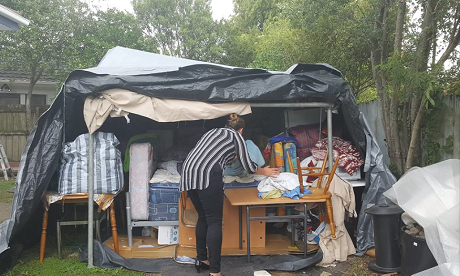Prime Minister Jacinda Ardern has rejected a plea from 59 organizations to lift the level of welfare payments before Christmas.
Trade unions, charities and poverty action groups were among those asking the government to address mass unemployment and poverty.
Working through umbrella group ActionStation Aotearoa [New Zealand], the groups published an open letter, saying the situation was “urgent.”
Families were being “pushed into poverty” by the loss of jobs under COVID-19, coupled with a long period of stagnant wages and high housing costs, they said.
Low welfare benefit rates mean that “right now, hundreds of thousands of children are constrained by poverty, despite parents’ best efforts.”
Many of those behind the letter are allies who campaigned and fund-raised for the government’s re-election.
They pleaded with Ardern to introduce measures to make Aotearoa “the best place to be a child.”
“This is not going to be an issue that gets resolved within one week or one month or indeed one term,” Ardern responded.
In 2017 she vowed to eliminate child poverty and the housing affordability crisis.
During her first term, a government Welfare Advisory Group worked on a raft of changes to reduce poverty.
Last year they recommended allocating an extra $5.2 billion a year for social welfare, immediately raising benefit rates for main benefits ranging from 17 to 47 percent. Indexing benefits to average wages was also suggested.
The government supported the indexation recommendation, but only increased benefit rates by $25 a week,. Further increases were “not fiscally sustainable,” it said.
At grass-roots level, health professionals are seeing the human side of poverty.
An Auckland school nurse says kids are coming to school with ill-fitting shoes falling off their feet or held together with tape.
Even before COVID, many were coming to her with headaches from dehydration, stomach cramps, lethargy.
They weren’t ill, she says: “I was finding they were just hungry kids.” She now spends $80 a week of her own money on feeding them.
KidsCan, which provides food, shoes and raincoats to schools, has now stepped in to help. The change in the students was “just remarkable …because now they’re not hungry anymore,” the school nurse says.
A Whangārei school principal says people don’t understand what children’s lives can look like when a family of six has $300 to cover rent, power and food.
Anxiety and stress have skyrocketed in the children at her school since the pandemic. Many families have been disturbed by job losses and housing changes.
Last week around 23,000 people at the end of the COVID-19 income relief payment were still unemployed.
Ministry of Social Development (MSD) figures to the end of October show only 5,000 had transferred onto the jobseeker benefit. Thousands of jobseekers don’t qualify for the benefit.
The official unemployment rate is expected to worsen. Food bank demand has tripled since last year.
A new report says nearly 40 percent of eight-year old children’s homes are cold, mouldy and damp.
It also reports that many families can’t afford to eat properly.
Source
- Scoop
- Stuff
- Image: The Daily Blog
Additional reading
News category: New Zealand.




